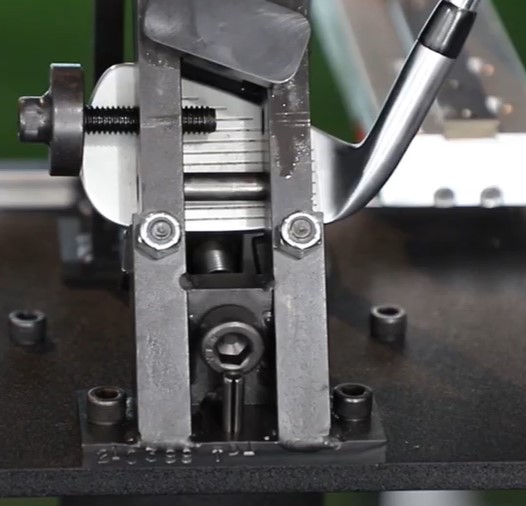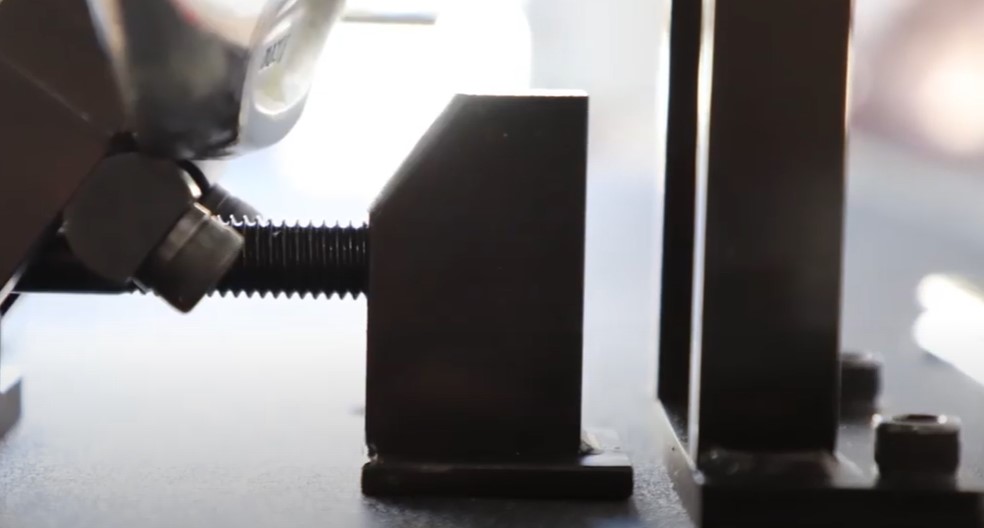

Front and rear shot of a Back Iron Clamp
Every Mitchell Golf Angle Machine is equipped with a back iron clamp. There are only two instances when you should use the Back Iron Clamp. These occur when the clubface does not clamp flush against the Face Fixture, or the club head slips when bending. These conditions are caused by the sole design of only a few models of clubs. So, using a Back Iron Clamp on every iron is unnecessary as it will only slow down your bending time.
Properly registering and bending techniques.
Let’s go over the process of properly registering and bending golf clubs. We are also including our video How to bending golf clubs. At the 2:28 mark, Patrick explains the Back Iron Clamp for reference if you ever need it.
General registering and bending methods are as follows:
First, Loosen the Top Worm Screw that adjusts the Top Clamp holding the iron head.
Next, insert the clubhead into the back of the Face Fixture, setting the club sole on the two Iron Sole Clamps and the club’s toe touching the Toe Stop. Now adjust the clubhead so the score lines are parallel to the leading edge of the Round Pivot Bracket between the Face Fixture. This is accomplished by adjusting the Toe Stop inward or outward, then tightening the Top Worm Screw.
Now adjust the clubhead so the scoring lines parallel the Horizontal Dowel Pin between the Face Fixture by adjusting the Toe Stop inward or outward.
Once the club is adequately registered, you will want to record the loft and lie readings before bending.
To use the bending bar, place it as low as possible on the hosel (for irons). To bend a hosel, apply light pressure to the bending bar in the direction of your desired bend until it is seated firmly against the hosel. Apply short, quick jolts of bending pressure to bend the hosel. Now remeasure the club and rebend it if necessary to your desired angles.
